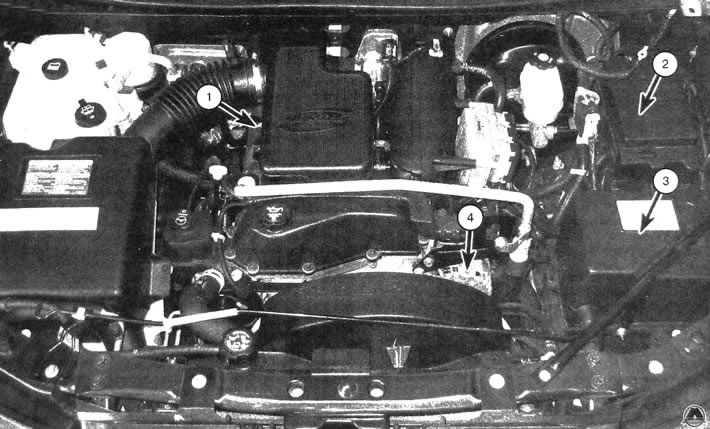General information
The engine electrical system consists of ignition, starting and charging subsystems (see illustration). Because. Since the functions of these systems are closely related to the engine, they are described separately from other electrical components of the vehicle, such as lights, instrument panel, etc., which are described in chapter 12.
Precautionary measures
Observe the following rules when working on the electrical system:
- A) When working on the engine electrical system, precautions must be taken to avoid damaging semiconductor devices (diodes and transistors), and also to avoid injury.
- b) Do not allow the ignition to be turned on for a long time when the engine is not running.
- With) Do not disconnect the battery cables while the engine is running.
- d) If the engine is started from an external battery, you need to connect the batteries "plus to plus" And "minus to minus" (see subsection "Starting the engine from an additional battery" at the beginning of this manual).
- e) When working on the electrical system, first disconnect the negative terminal of the battery. Disabling should be carried out in accordance with the recommendations below.
Before performing the procedures described in this chapter, it is recommended that you familiarize yourself with the items in the subsection related to electrical systems of motors "Safety comes first!", at the beginning of the manual.
Disconnecting the battery
There are various systems on the vehicle that require a constant supply of power to ensure their continuous operation (for example, clock, car radio, electric windows, central locking, etc.), and for storing various information in memory blocks. When disconnecting the battery, observe the following requirements to prevent accidental disconnection of devices and loss of electronic memory data.
- A) Before disconnecting the battery on a vehicle with power door locks, remove the key from the ignition and keep it with you to avoid leaving it in a vehicle whose central locking will be locked the next time the power is connected.
- b) On vehicles equipped with an engine management system, after disconnecting the battery, the parameters stored in the microprocessor memory are lost; such data includes engine idle speed parameters, operational fuel injection parameters and fault codes present at the time of disconnection (see chapter 6). To restore normal engine control mode, it is necessary to program the listed data into the control unit. After connecting the battery, these parameters will be automatically loaded into the electronic memory of the unit, but before this, engine operation may be characterized by a decrease in performance characteristics and be accompanied by such phenomena as a drop in crankshaft speed and unstable idling. To reprogram the control unit, you need to start the engine and warm it up at idle to normal operating temperature. After this, it is necessary to increase the speed to 1200 min-1 and maintain the power unit in this mode for about 2 minutes. After this, you need to drive the car for about 7 km, changing the load on the engine and its speed throughout the entire operating range. Thus, the engine control system unit will be reprogrammed.
To avoid the problems described above, you should use storage devices. The method of using such a device depends on its type. Typically, the storage device is connected to the cigarette lighter socket and to the backup battery. After this, you can disconnect the battery. This device maintains the voltage in the circuit necessary to save the radio security codes and parameters in the electronic memory of the ECU. The storage device ensures continuous operation of the electronic watch. No malfunction of these elements occurs even if a short circuit occurs in the engine electrical system during repairs or maintenance.
Caution 1: Since the memory device maintains voltage in the circuits after the battery is disconnected, make sure that the serviced circuit is open before starting work.
Caution 2: If you plan to work near components of the SRS system, do not connect storage devices when disconnecting the battery, as this may cause sudden deployment of the airbag, which could result in personal injury.

1.1. Elements of a typical engine electrical system: 1. Ignition coils (located under the intake air duct resonator); 2. Distribution block located in the engine compartment; 3. Battery; 4. Generator
